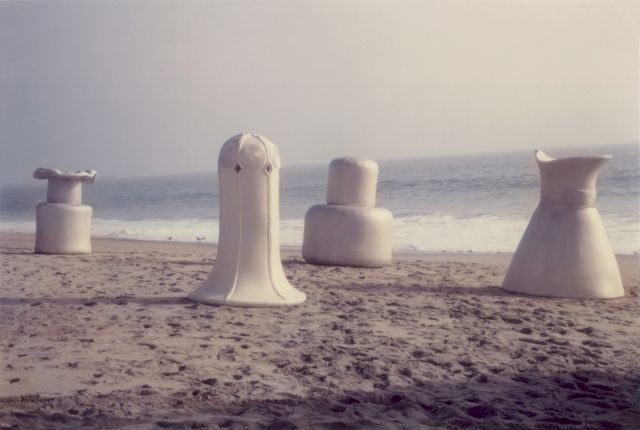BMW Art Guide by Independent Collectors
Grazyna Kulczyk
Founder of Muzeum Susch

What was the first piece of artwork you purchased, and when was this?
I do not remember the very first artwork I purchased, however I do remember the first artwork I bought after the Iron Wall collapsed and my husband and I were engaged in building the economy in Poland. The artwork was a 1960s painting by Antoni Tàpies. It was very symbolic at the time. The economic system in Poland had just changed, and it was my first Sotheby’s auction acquisition. It was the beginning of a new era and I felt what being included in a more open world might look like.
Tell us about the history and concept of your collection.
Early on in my business activity, I adopted a 50:50 concept, investing equal parts into business and culture. The beginning was in car showrooms since my family was a general importer of VW group brands. I decided to make small art exhibitions in car showrooms to promote artists. As the scale of my businesses grew, so did my initiatives in culture, such as Stary Browar, a 140,000sqm commercial hub and cultural center in my native Poznań, Poland. I exhibited art in the public spaces of the Stary Browar as well as in dedicated exhibition spaces.
It has always been my dream to establish a home for my collection. My initial intention was to cooperate with the government in my hometown Poznań to build and later operate a museum in the complex of Stary Browar for a public-private collaboration, but unfortunately this was denied, I proposed a similar project later in Warsaw - again denied. Since I had already been living in the Engadin in Switzerland for some years, with plans for an annex of my activity in Poland. I decided to realize my mission in Susch instead.
The activity at Muzeum Susch, which goes beyond my collection, has a commitment to establishing a matrilineage in art history. The museum supports research, conferences, choreography performances, residencies and invites guest curators to take my collection as a point of inspiration to explore and propose what this matrilineage could look like.


Why did you decide to make your collection publicly accessible and what are the benefits?
To clarify, I do not show my collection in Muzeum Susch. Rather, I support research and realize an exhibition programming dedicated to showcasing a matrilineage of omitted, overlooked, and misread artists and it feels intuitive to share that with the public. These principles are in general similar to my collecting strategy. Muzeum Susch is a living organisation with an active program of temporary exhibitions, research and performances. Making it accessible to the public invites opportunities for discussion and knowledge sharing in unexpected forms. Regarding my collection I am always very open to loan artworks to the various exhibitions around the world.
What is your biggest hope for the future of art and collecting?
I hope more and more private collections will turn towards public missions and away from the vanity path. Since I deeply believe private initiatives can implement very mature, important, and sophisticated programs and they are not so vulnerable to global crises, they are able to react dynamically to the changing environment without foregoing their missions.
What advice do you have for starting a collection?
Do not be afraid of making mistakes - they make collections genuine. However, at the same time, it is important to think about how the collection will change in the future to contribute in the global art history.


Which publicly accessible private collection would you recommend visiting (internationally)?
The most important collectors do not only show their collections, but they also realize wider exhibition programs. Since my mission is clear, I would recommend the private collections of women collectors such as Ingvild Götz, Miuccia Prada, Patrizia Rebaudengo, Maya Hoffman, Cristina Bechtler.
In addition to Muzeum Susch, what exhibition or collection is on your “must-see” list in Switzerland?
Switzerland is lucky to have great exhibitions and collections accessible to the public. If possible, I would recommend Kunstmuseum Basel, Beyeler Foundation, Bechtler Stiftung, Ursula Hauser Collection.


